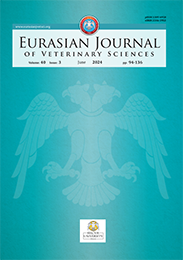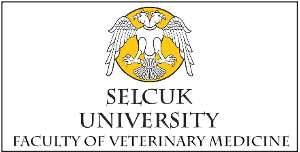| 2004, Cilt 20, Sayı 4, Sayfa(lar) 047-052 |
| [ Türkçe Özet ] [ PDF ] [ Benzer Makaleler ] |
| Isolation and Identification of Campylobacter jejuni in goose carcass, goose cloaka, goose bedding and goose, chicken and quail eggs |
| Mehmet Elmalı1, Hilmi Yaman1, Zeynep Ulukanlı2, Kenan Genctav3 |
| 1Kafkas Üniversitesi Veteriner Fakültesi, Besin Hijyeni ve Teknolojisi Anabilim Dalı, KARS 2Kafkas Üniversitesi Fen Edebiyat Fakültesi, Biyoloji Bölümü, KARS 3Kafkas Üniversitesi Kars Meslek Yükselt Okulu, KARS |
| Keywords: Bedding, C. jejuni, Poultry, Carcass, Goose, Egg |
| Downloaded:1568 - Viewed: 3181 |
|
Goose are kept in small flocks in Kars and Ardahan district. Goose meat is a tradionally important food and consumed during winter months by local people. In this study, the presence of Campylobacter jejuni was investigated in 25 fresh goose carcass, 42 cloaka swap samples taken from goose, 6 beddings samples taken from 6 cages, 94 goose eggs, 66 chicken eggs and 108 quail eggs collected from farms. The results showed that there is no vertical contamination of Campylobacter jejuni froom goose, chicken and quails to their eggs. It was determined that goose beddings contained Campylobacter jejuni at important levels (mean of 2.23 MPN/g) indicating gooose beddings as a contamination source Campylobacter jejuni was isolated from goose carcasses at the mean level of 2.05 MPN/g that can cause camp-ylobacteriosis. It was concluded that fresh goose carcasses and goose beddings may affects human health in negative.
|
| [ Türkçe Özet ] [ PDF ] [ Benzer Makaleler ] |





